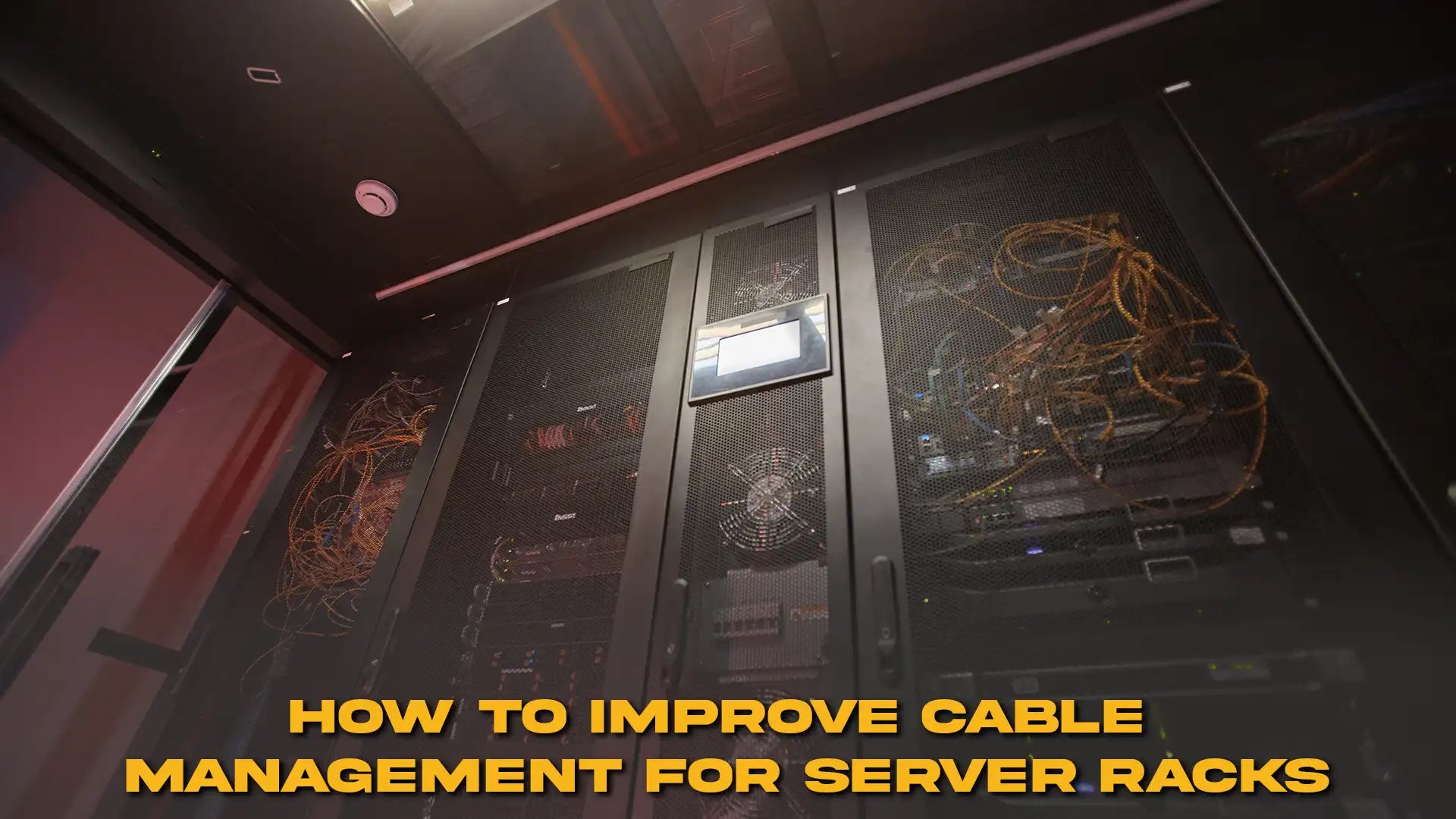In IT infrastructure, server cabinets are the unsung, but vital, heroes that protect fragile and expensive computing equipment. Most are familiar with the standard racks used in air conditioned data centers, but a different enclosure is needed when mounting technology in hostile environments. That's where the IP66 rating becomes a vital necessity. This rating is worth learning about for any company or IT administrator planning to install equipment outside a traditional data center, whether on a factory floor, in a construction setting, or as part of a smart city initiative.

Understanding the IP Rating System
The IP or Ingress Protection rating system is an international standard (IEC 60529) that classifies and rates the degree of protection of mechanical casings and electrical enclosures against the entry of foreign bodies and moisture. It is made up of the letters "IP" and two subsequent digits.
The first digit indicates the level of protection against solid objects, such as tools and dust. The rating ranges from 0 (no protection) to 6 (complete protection). The second digit indicates the level of protection against liquids, specifically water. This rating ranges from 0 (no protection) to 9K (protection against high pressure, high temperature jets).
To qualify for an IP66 rating, the "6" in the first digit represents the highest rating for solid ingress protection. In other words, the server cabinet is dust-tight. There can be no dust ingress under specified test conditions. This is a highly significant factor in delivering the longevity and reliability of sensitive electronic devices that are easily overheated or short-circuited by accumulated dust particles.
The second "6" represents a high level of water resistance. It is a sign that the enclosure has protection from strong jets of water. That is, the enclosure is capable of withstanding water in strong jets (12.5 mm nozzle) from any direction on the enclosure without any harmful effects. This level of dust and water resistance is what makes IP66 enclosures suitable for demanding locations.

Why IP66 is Required for Challenging Environments
If a server enclosure needs to be placed outside of a climate-controlled server room, it is subject to some significant risks. Those risks are not limited to unauthorized access but also to environmental conditions that will ruin equipment. An IP66 rating addresses those primary environmental concerns head on, offering good environmental protection for your expensive hardware.
Factory floors, food processing facilities, seaside areas, or outdoor telco closets expose equipment to conditions far more extreme than a typical office. In these types of settings, the equipment will probably undergo wash downs, heavy rains, or constant exposure to airborne contaminants. A standard, open frame server rack would survive literally no time at all.
It is the level of sealing and build quality that is represented in an IP66 rating that transforms a standard cabinet into a rugged fortress. These enclosures typically feature complicated gasketing, sealed cable entries, and heavy duty latching systems designed to maintain the integrity of the seal throughout the life of the cabinet. This makes them suitable for severe applications and thus industrial-grade server racks.
Comparing IP66 with NEMA Standards
Although the IP rating system is an international standard, American consumers are often exposed to NEMA standards (National Electrical Manufacturers Association). It is important to understand the relationship and difference between these two sets of specifications because both specify corrosion-resistant enclosures and degrees of protection.
The NEMA rating system is more general than the IP system in that it also deals with such matters as corrosion-resistance, structural strength, and gasketing qualities, along with dust and water protection. Approximate equivalents do exist, however. An approximation is that a NEMA Type 4 enclosure is most comparable to an IP66 enclosure.
NEMA Type 4, like IP66, is for indoor or outdoor server cabinets and provides protection against falling dirt, rain, sleet, snow, windblown dust, splashing water, and hose-directed water. It also provides protection against external ice formation on the enclosure. When specifying a cabinet, particularly in the US, engineers and purchasing managers must ensure the enclosure they choose has the required NEMA rating or equivalent IP rating to provide appropriate environmental protection.

The Practical Application of IP66 Rating
Choosing a weatherproof server enclosure with an IP66 rating is not a checkbox exercise in compliance; it is a critical investment in continuity of operations and hardware lifespan. For businesses extending their IT presence to the network edge, these enclosures are the key. Edge computing installations, for instance, often involve placing small data centers or comms hubs in non-standard environments.
Consider, for example, a traffic control system. The gear must operate faultlessly 24/7 in the midst of harsh summer storms, winter snows, and omnipresent road dust. An outdoor server cabinet with this high degree of ingress protection is essential. The same goes for smart manufacturing, where tiny servers and sensors are mounted directly on the factory floor, where they're exposed to chemical vapors, oil mist, and wash down procedures. The rugged design of these corrosion-resistant enclosures ensures that the sensitive network switches, power supplies, and servers inside are clean and functional.
This level of assurance, that your hardware is secure from the external elements, is the key value proposition of an IP66 rating. It allows organizations to extend their computing capabilities into just about any environment, confident that their industrial-grade server racks will deliver maximum uptime and longevity, regardless of the severe conditions outside the cabinet door.
The utilization of an IP-rated enclosure, more specifically one that is rated for IP66, stands as a testament to the dedication to deployment reliability and resilience. It is the gold standard for protecting against the simultaneous threats of dust and water resistance in the field.
Beyond IP66: Factors to Note in Weatherproof Server Cabinets
While an IP66 rating is a solid indicator of environmental resilience, the selection of the perfect weatherproof server cabinet means looking at a few more factors. The enclosure must also address the heat generated by equipment inside. Since an IP66 enclosure is sealed against the entry of elements, it must incorporate active cooling systems, such as filtered fan systems, air conditioners, or heat exchangers, to ensure the internal temperature does not exceed a safe threshold. These cooling systems must themselves be designed to maintain the integrity of the cabinet, so the IP rating is not compromised by vents or openings.
The corrosion-proof enclosures material is also very crucial, especially in coastal areas or very corrosive environments. Stainless steel or high-quality powder-coated aluminum cabinets will last longer than regular sheet metal. If you are in North America, it is also a good idea to check the various NEMA rating compliance specifically as these are usually concerned with the aspects of mounting, security, and material thickness which are not directly covered by the IP rating's focus on ingress protection.
To sum up, the IP66 rating serves as a guarantee of the cabinet’s complete dust sealing and its powerful jet's water protection, thus offering perfect conditions for reliable and long-lasting infrastructure mounting wherever the environmental condition is unfavorable.



Leave a comment
This site is protected by hCaptcha and the hCaptcha Privacy Policy and Terms of Service apply.